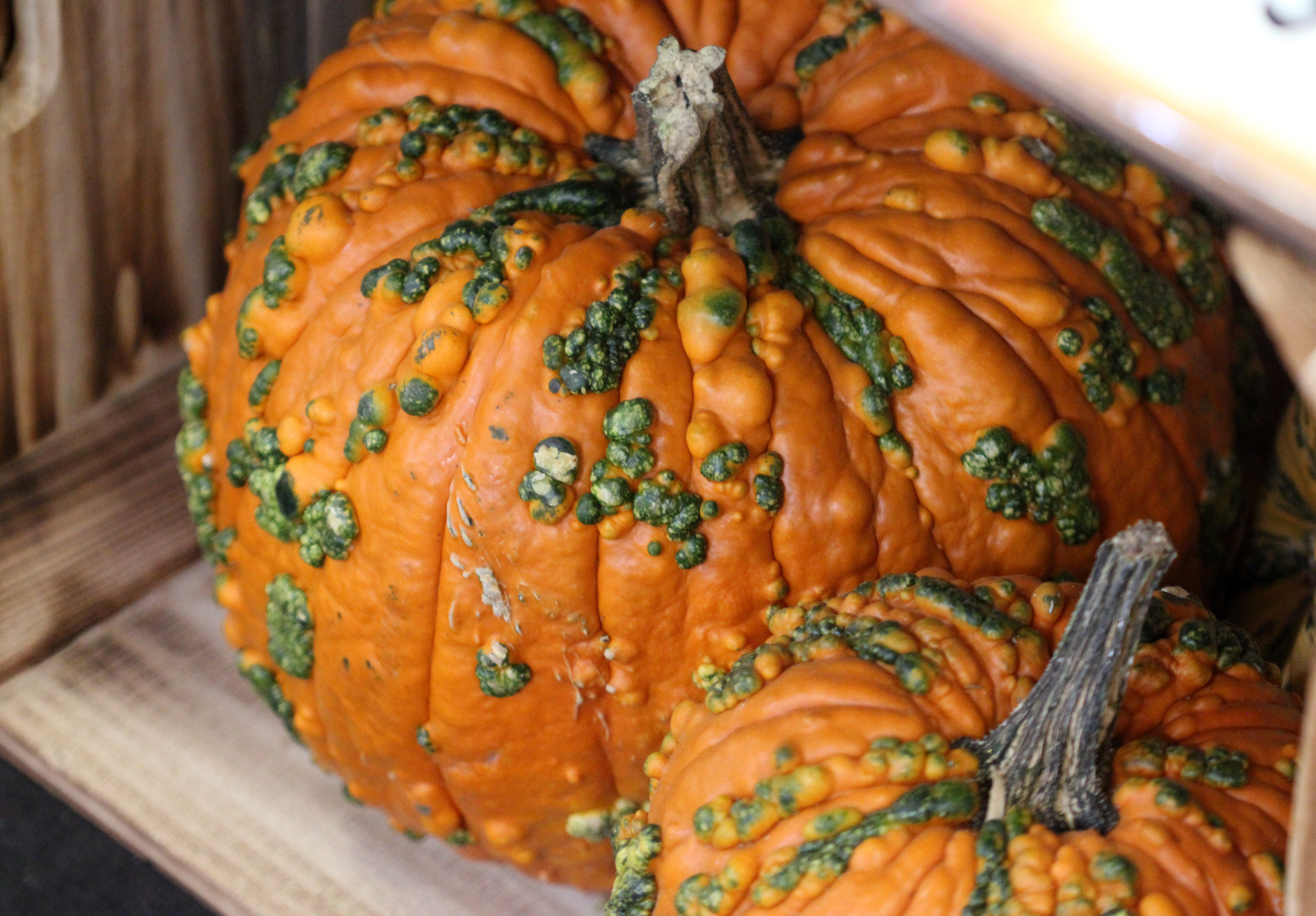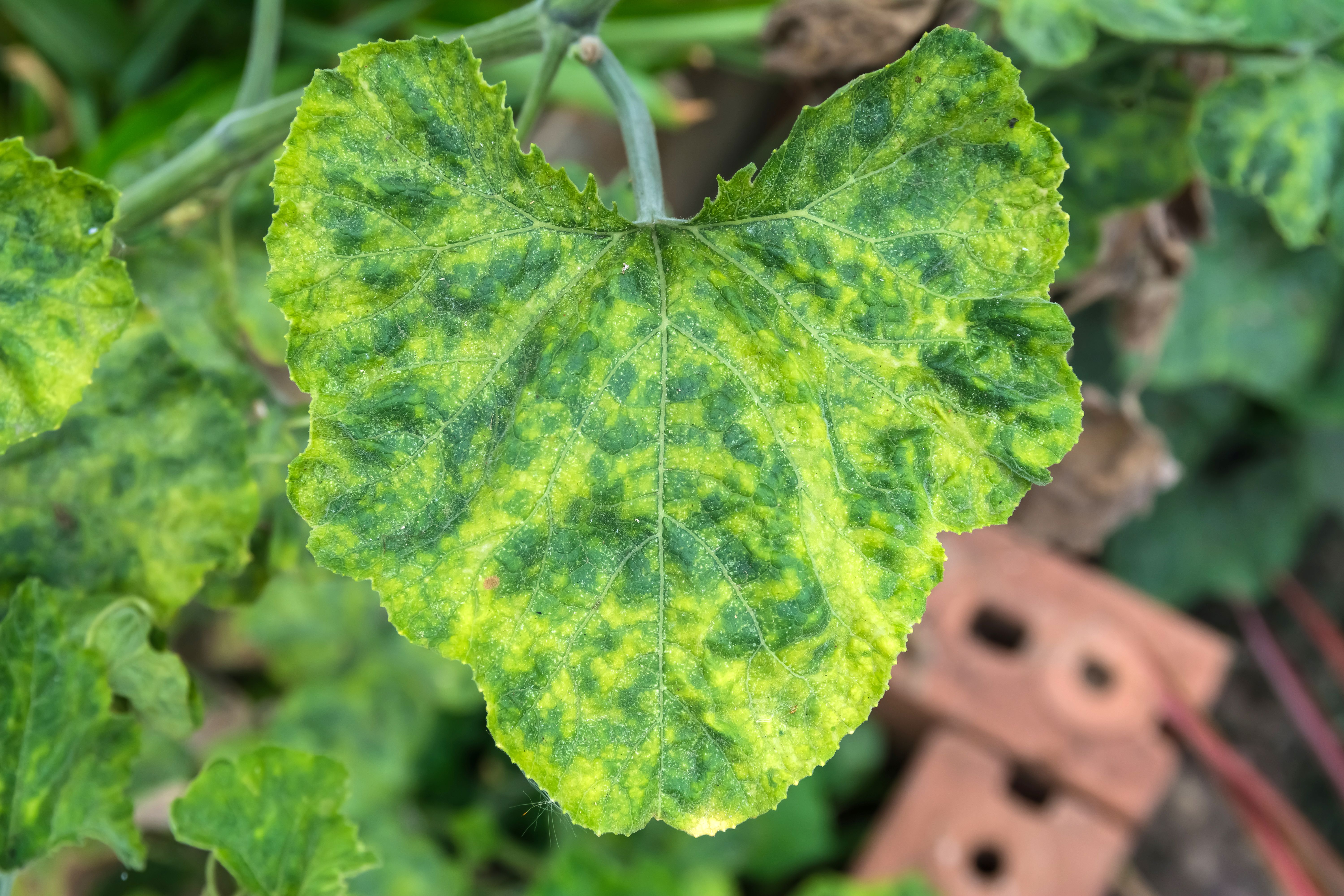Pumpkins come in all shapes and sizes; they can be an array of autumnal colors; and, sometimes, they’re covered in weird little warts. So, what’s all that about?
There are a few different reasons why your prize pumpkin might have a few lumps and bumps – let’s explore the warty world of winter squash.
Genetics
For some gourds, it’s all in the genes. Certain pumpkin varieties – the appropriately named Knucklehead pumpkins like Frankenstein Scarface and Warty Goblin, for example – are just born warty. Or rather, we’ve engineered them to be that way.
Years of selective breeding has helped transform naturally lumpy pumpkins into those that produce warts in excess.

Knucklehead pumpkins are bred to enhance their wartiness.
Image credit: Gurcharan Singh/Shutterstock.com
Pumpkins belong to the gourd family, also called cucurbits, which produce separate male and female flowers on the same plant. This means they can cross-pollinate with other pumpkins, and gives rise to all sorts of variation, including warts.
As these “imperfections” have become more popular with consumers, breeders have taken to selective breeding to achieve that coveted gnarled look.
Take the Knuckleheads – they originated from a specialty line of pumpkins known as Superfreak developed by Siegers Seed Company in 2008. It took over 10 generations of cross-breeding to create the extra warty varieties we see today.
Viruses
Unfortunately, warts often spell bad news for pumpkins. If yours isn’t a variety of bumpy pumpkin fruit (yes, pumpkin’s a fruit), then its protrusions may be a sign of viral infection.
Mosaic viruses plague the cucurbits, pumpkin included, and are generally transferred via aphids, or in the case of the Squash Mosaic Virus, beetles. The bugs pick up the virus while feeding on infected weeds and crops, and spread it to other plants.

Infected pumpkins also have blotchy leaves.
Image credit: YuRi Photolife/Shutterstock.com
If the lumps on your gourd look like they arise from under the skin, or it has unusually small, mottled leaves and vines, then it’s likely succumbed to a mosaic virus. Pumpkins that are engineered to be warty, meanwhile, look like each protuberance sits atop the skin.
Infected pumpkins can still be eaten, but they may not be as tasty as healthy fruit.
Edema
Breeding and viruses aside, warty pumpkins can also be a result of edema, which is caused by the absorption of too much water.
It is a particular problem in cool, wet years, when the air is cooler than the soil. Under these conditions, a pumpkin’s roots may take up water at a faster rate than it can be used or transpired. As a result, the plant’s cells swell and eventually burst, healing to form a wart-like scar.
Insects
Lastly, insects can wreak havoc on cucurbits, feeding on their flowers, leaves, and fruits. One particularly prolific creepy crawly is the cucumber beetle (which also carries mosaic viruses). When they munch on your pumpkin, they scar its surface, which can make it appear covered in unsightly lumps.
So, there you have it: genes, viruses, water, or bugs. But whatever the source of your pumpkin’s bumpy bits, please don’t dump it in the woods after Halloween.
Source Link: Why Does My Pumpkin Have Warts?